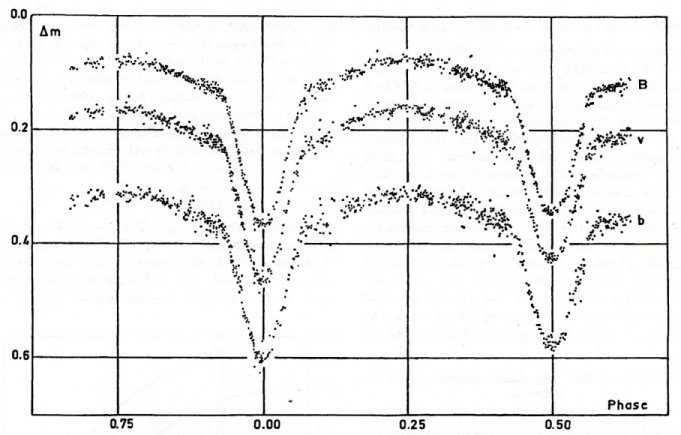
 |
In mutual orbit, the two stars of Chi-2 Hydrae partially eclipse each other every 1.134 days. At left, the dimmer secondary component covers part of the primary, while at right the primary covers part of the secondary. The actual orbital period is thus twice the interval between the eclipses, or 2.267 days. The light curve (magnitude vs. time as compared with a nearby non-variable star) is presented in three colors or wavelength bands: standard blue (B), shorter-wave blue (b), and ultraviolet (v). If the eclipses were total, the minima would have flat bottoms as one star disappears behind the other. Instead, the recovery is instantaneous. The variation outside of eclipse is the result of mutual tidal distortion, the orbiting stars thus continuously presenting different angular areas to the observer. (Light curves from H. Mauder and U. Koehler in Astronomy and Astrophysics, 1, 147, 1969.) |